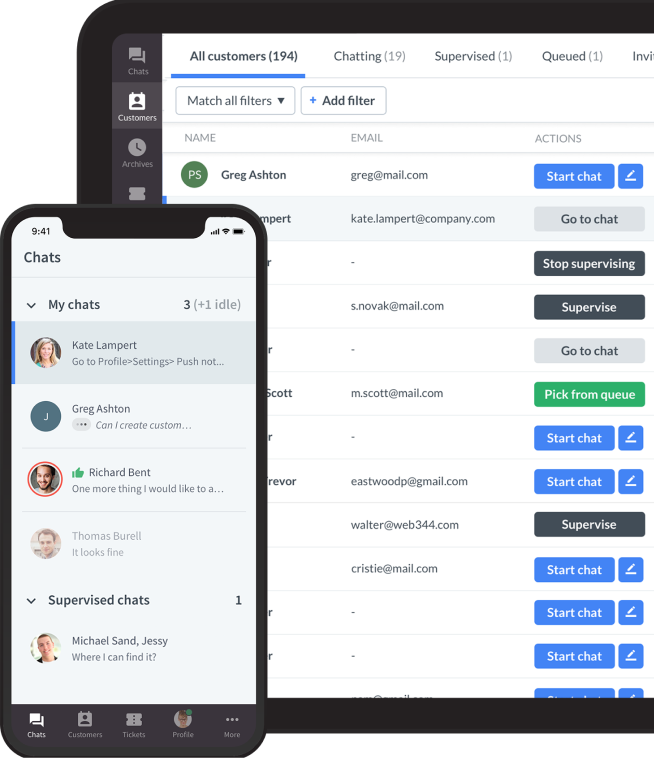Showing top 0 results 0 results found
Showing top 0 results 0 results found

Do you remember the last time you bought something online? Can you remember what convinced you to choose a particular product or service over other options? We’re swamped with ads all over the web. Whether it’s social media, mobile apps, or a simple Google search results page, businesses want you to spend your money. They’ll try to reach you through all available channels.
You start weighing your options. Maybe you just found a perfect match that suits your needs better than the alternatives. It could also be that the discount you came across looks like a steal and the fear of missing out hits so strong that you simply can’t resist the discounted price tag.
With many factors influencing our decision-making, we don’t always pay much attention to the less obvious reasons for why we hit the “buy” button. Whether you’re aware of it or not, website copy is one of the critical reasons for an increased conversion rate. Copywriters don’t just come up with copy out of the blue, or at least they shouldn’t do that. They spend hours or even days researching their target audience before they put pen to paper. That research method is known as the voice of the customer (VoC).
What’s the voice of the customer?
Voice of the customer research focuses on collecting pieces of information about your existing and potential customers' needs and pain points. It gives you a bird’s-eye view of what they say about your business, product, or service, and it’s a goldmine of consumer insights that you can use to write your copy.
Look for what your target audience says about what you’re selling in their own words. It’ll be a lot easier to make them say "yes" to your product by using their own vernacular in your copy than it would be if you used something you made up. From a copywriter’s point of view, data collected during VoC research is invaluable. You get to see how people talk about your product or service without all the marketing gibberish. It makes it a lot easier to communicate with your audience in a way that feels more natural to them.
The goal of your copy should be to make the reader take the desired action. Anna Bolton, Copy Chief at Conversion Copy Co., says, “Conversion copy research starts with this question: What do we need to know about the reader to move them to the next most valuable ‘yes’?”
You have to be persuasive, and you can’t be if you don’t know your target audience's language. Get into your customers’ heads, and figure out their desires and motivations. As CXL puts it, “Find out what your ideal target audience needs to hear and the language in which they think about it to trigger a response.” Show your customers what they’re missing. Show them how your product is going to improve their lives and amplify that feeling.
Different techniques to collect the voice of the customer
Let’s talk about three main ways of collecting VoC data: interviews, surveys, and review mining. While they all serve the same purpose, each of them requires different levels of preparation, time, and effort. On top of that, you’ll also need to use different channels to collect your data.
Voice of the customer interviews
Interviews are the most time consuming. Out of all three methods, you’ll need to put in the most significant amount of time to pull off interviews in a way that will return the desired results. Before you conduct an interview, there’s a lot of work that goes into preparing for the actual conversation.
Make a list of customers that you think might be the best fit for the VoC interview. Reach out to your ideal candidates and ask if they want to answer your questions in an email, over a Zoom call, or any other form of videoconferencing. While you wait for their consent, prepare the questions that you want to ask.
If you’re unsure of what to ask about in your interviews, Anna Bolton provides a handy template that’ll help you get all the essential information. A few of the questions that your research should give you the answers to are:
- What is the ideal buyer’s stage of awareness?
- What do they think about the problem we solve?
- What alternative solutions are they using, have they used, or are they considering?
- What beliefs or past experiences are holding them back?
- What beliefs or past experiences make them more likely to say yes to us?
- What do they need to believe to take the next step?
- What proof are they likely to find persuasive?
- If they say yes, what’s going to change in their lives?
- Despite all this, what objections might they have?
Ideally, you’ll get an overview of the challenges that your customers faced before they began using your product or service. Later, they should describe what changed when they started using it and how it alleviated their problems. Lastly, you’ll learn the final effect your product or service had on their business, how it affected their bottom line, etc.
Once you have the answers to your questions, it’s time to gather your data in a spreadsheet and get to the essence of your research. This means finding the patterns and themes that reoccur in at least a few of your interviews. You might be thinking, “Right, but how many interviews are enough?” You’ll need at least five of them, but keep going with your research for as long as you’re getting new insights. Once your customers’ answers start to give you very similar information over and over again, you probably have enough data to digest. Organize it in a spreadsheet, and highlight phrases that can be the base of your copy.
You need to be aware that you probably have different types of potential customers. It means that your copy isn’t going to affect all of them to the same extent. You need to find balance, and lean towards a group that’s potentially going to benefit your copy the most. On top of that, figure out the ideal buyer’s stage of awareness and where they are on their consumer journey. Copy that will resonate with more aware customers might not cut it with those who barely know a thing about your product.
Voice of the customer surveys
Collecting the VoC with surveys is very similar to interviewing your customers. However, it’s less time consuming, so surveys are your best bet if you’re short on time. Preparing, running, and analyzing surveys will take a similar amount of time, but you’ll eliminate the hassle of sending out invites and conducting interviews. Unlike with interviews, while your respondents fill out the surveys, you can focus on other tasks.
Surveys can take many forms. You can use third-party tools like SurveyMonkey or Typeform and create comprehensive surveys that you’ll later be able to export to a spreadsheet. If you don’t feel like subscribing to one of those tools, you can always use Google Forms.
Creating long forms isn’t the only way to survey your existing and potential customers. Say you have live chat implemented on your website. You can set it up so that your users have to fill out simple forms before they connect with a support agent. The fact that your website visitors can’t talk to your agents right off the bat might be a tad frustrating for them. Still, it’s worth the sacrifice because the information you collect using those forms can give you an idea of what brought them to your website or what problem they are trying to solve.
It makes sense to place similar forms on virtually any page of your website. Add one to your pricing page to determine if people think that you offer good value for money. Allow them to share any other pricing-related feedback. When it comes to visitors bouncing off of your upgrade page, add a pop-up asking them about their reasons for not completing the purchase. Your website can be your most efficient surveying tool. Just make sure that you don’t throw too many questions at your customers at once.
Whether you choose interviews or surveys, think about incentivizing your respondents. If your business is the only beneficiary, your customers might not be willing to give you the data you need. Consider giving them something like gift cards or subscription coupons in return for participating in your research.
Review mining
The lack of time, a budget, and a limited data source to analyze are among the reasons why it won’t always be possible to do extensive research. Review mining is the least time consuming, and it doesn’t require you to do nearly as much preparation as surveys and interviews.
If you haven’t stumbled across the term “review mining” before, it’s browsing review sites and collecting golden nuggets that describe your business in your customers’ words. While review mining doesn’t take as much time as interviews or surveys, you’ll still need to spend a considerable amount of time before you’re satisfied with your research. You can find the most precious feedback that’ll make its way directly into your website copy in the first review you read. However, chances are you won’t find it until you read the tenth review.
While not exactly a review website, Reddit is the perfect place to begin your review mining. Dubbed as “the front page of the internet,” Reddit is a network of communities based on people’s interests. Those communities, known as subreddits, are about almost anything you can imagine. While there’s a sea of silly or creepy stuff at your fingertips, a lot of those communities are more professional. That’s where you want to go to find out what your prospects think about your industry, competitors, or you.
Now, if Reddit isn’t your cup of tea, take a look at more business-oriented platforms like G2 or Capterra. What’s great about consumer review websites like these two is that you can filter the reviews based on industries to target your copy better. On top of that, when you take a look at G2, their reviews are structured in a way that answers five questions:
- What do you like best?
- What do you dislike?
- Would you recommend it to others?
- What problems are you solving with the product?
- What benefits have you seen?
As a copywriter researching the VoC, could you ask for more to make your job easier? All you need to do now is use the data you’ve collected to write copy that will make people hit the “buy” button.
Without using VoC research, your copy will be a risky guessing game that will hamper your sales in the long run. Sure, you could write your copy without doing any research. If you’re lucky, it will resonate with your audience. But ask yourself if you really want your revenue to depend on luck instead of decisions based on data and strategy.
Get a glimpse into the future of business communication with digital natives.
Get the FREE report






Comments